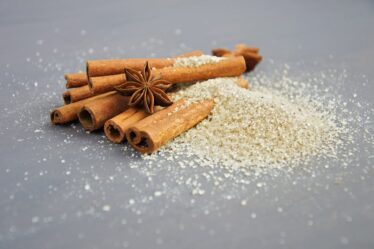
Cultural and Health Significance of Sweet Basil
Sweet basil (Ocimum basilicum), originally hailing from India and parts of Asia, has woven itself into the essence of world gastronomy. Globally recognized in the culinary worlds of Vietnam, Thailand, and even parts of Africa, basil enlivens dishes with its pungent sweetness and subtle peppery edge.
Exploring the layered benefits of this aromatic herb reveals a host of nutritional and health properties revered in both ancient and modern wellness practices. Rich in vitamins K and C, magnesium, iron, potassium, and calcium, sweet basil supports a balanced diet. Its leaves are packed with antioxidant-rich essential oils, which play a crucial role in reducing oxidative stress—a condition that can trigger chronic diseases.
The lore of sweet basil extends into traditional medicine, where it has been hallowed as more than just a culinary delight but a medicinal ally. Recent scientific studies show basil's effectiveness in reducing inflammation, managing blood sugar levels, and bolstering mental health, potentially aiding in reducing anxiety and enhancing mood1.
In everyday cooking, incorporating sweet basil manifests as an uplift in overall well-being. Regular consumption could contribute to improved immune function, heart health due to its eugenol content—known for lowering blood pressure—and anti-inflammatory properties that are crucial for managing pain and swelling in conditions like rheumatoid arthritis2.
Beyond its health benefits, sweet basil's integration into daily meals emphasizes a closer connection to natural food sources, advocating for more plant-based ingredients that nurture the body and mind. Its bold flavor and aromatic presence can transform not only the taste but also contribute an underlying depth—bringing to bear a sense of the fields and sun-drenched gardens where it originated.
Embracing sweet basil in cooking pays homage to a tradition stretching back through generations—a confluence of flavor and health benefits passed down through centuries. Though humbly beginning its journey rooted in the soil, sweet basil stands monumental in the culinary and health arenas, illustrating how integral plants can be in our quest for delicious and health-oriented lifestyles.
Selecting and Storing Sweet Basil
When seeking the freshest sweet basil, examine the leaves carefully for a vibrant green color without any dark spots which may suggest decay. The leaves should appear firm and perky, not wilted or bruised. Gently rubbing a leaf between your fingers should release a strong, distinctly sweet aroma, indicating the herb's freshness and quality.
For optimal storage, follow these steps:
- Trim the stems slightly and remove any damaged leaves.
- Place the basil upright in a glass filled with a few inches of water, just like a bouquet of flowers.
- Cover the leaves loosely with a plastic bag, creating a somewhat humid microenvironment that helps preserve freshness.
- Store this setup in the refrigerator, changing the water every few days to maintain a clean environment.
For longer-term storage, sweet basil can be preserved effectively through freezing. Wash and thoroughly dry the leaves before laying them flat on a baking sheet to freeze individually. Once frozen, transfer the leaves into a sealable plastic bag and keep them in the freezer. This method locks in flavor and maintains nutritional value, ensuring the basil can be enjoyed for months.
Another approach for long-term keeping is to create basil ice cubes. Chop the clean leaves, pack them into an ice cube tray, and fill each section with water or olive oil before freezing. These basil-infused cubes can be directly added to dishes during cooking, offering a convenient burst of flavor.
Each of these storage methods ensures that sweet basil's peppery-yet-sweet flavor profile remains as potent as possible, letting you enjoy the taste of summer all year round. The key to preserving the nuanced flavors and health benefits of this beloved herb lies in handling it gently and storing it correctly, allowing its unique characteristics to shine in each dish you prepare.
Preparatory Techniques for Sweet Basil
For culinary enthusiasts eager to utilize sweet basil in their dishes, understanding the correct preparatory techniques is key to fully appreciating its flavor and health benefits.
Start by washing the basil gently under cold running water to remove any dirt or residues. Handle the leaves delicately to prevent damage. Immerse the basil leaves in a bowl of cold water, swirling them softly to dislodge any particles. Lift the leaves out of the water rather than pouring them into a colander to avoid bruising.
After washing, dry the leaves thoroughly since moisture can dilute the essential oils responsible for the herb's distinctive aroma and taste. Pat the leaves dry with a soft kitchen towel or use a salad spinner. Be gentle to avoid crushing the leaves, which can lead to premature wilting and flavor loss.
Chopping basil is often necessary for recipes that require integrating the herb into sauces or dressings. Use a sharp knife to minimize bruising and tearing, which can alter the herb's flavor profile and appearance. Chiffonade the basil by stacking the leaves, rolling them tightly, and slicing them into thin ribbons. This method preserves the integrity of the flavor and maximizes the visual appeal in dishes.
To release the maximum aroma and essential oils from basil, tear the leaves by hand right before adding them to a dish. This practice often yields better flavor than pre-chopping and storing. To retain the maximum amount of flavor and nutrients, add basil at the final stages of cooking. Prolonged heat can diminish its vibrant color and bold flavor.
Basil also gains from being introduced to warm—not hot—oil briefly before incorporating it into a recipe. This technique allows the oil to infuse with the essential oils of the basil, disseminating a fuller flavor throughout the entire dish. Be cautious with the heat to prevent frying the leaves, which can lead to bitterness.
Each step in the preparation of sweet basil is a tribute to its sensational flavor and extensive health benefits, ensuring every culinary creation it graces maintains the highest quality and taste.
Sweet Basil in Culinary Creations
Sweet basil is the cornerstone of numerous classic recipes, notable for its vibrant, peppery yet sweet essence that enhances a wide variety of dishes. Beyond its traditional place in pesto and fresh pairing with tomatoes, this versatile herb can transform a simple plate into a complex array of tastes and fragrances that resonate with diners across many cultures.
In Italian kitchens, sweet basil often finds its home in sauces and marinades. Blending it into a homemade tomato sauce just before serving maintains its brightness and injects a burst of flavor that complements the acidity of tomatoes beautifully. A classic caprese salad, featuring fresh mozzarella, ripe tomatoes, sweet basil, and a drizzle of balsamic glaze, showcases this herb's simplicity and potency.
Transitioning from Europe to Asia, sweet basil becomes crucial in Thai cooking, offering a fragrant counterpart to the spicy, salty, and sweet flavors typical of the region. Stirred into curries, wrapped in fresh spring rolls, or tossed in spicy Thai basil chicken, its leaves infuse each dish with a unique taste that is indispensable within this cuisine.
Innovative chefs and home cooks alike are pushing the boundaries of how sweet basil is used in modern culinary preparations. Its aromatic quality makes it an excellent candidate for infusions in beverages or desserts. Imagine a refreshing basil lemonade on a summer day, where the herb's essential oils provide a refreshing and subtly bold undertone to the zesty lemon. In desserts, basil can be finely chopped and mixed into a strawberry and basil sorbet, where it balances the sweetness of the strawberries with a fresh herbaceous note.
For those interested in experimental cooking, consider crafting a basil-infused oil that can be drizzled over grilled vegetables or whisked into vinaigrettes. Infuse spirits like vodka or gin with basil to create novel cocktails that excite the palate and elevate the happy hour experience with an unexpected flavor twist.
The diversity of sweet basil's applications allows it to stand as a pillar in adventurous culinary efforts, suggesting new horizons for familiar dishes and offering a taste of summer with every bite or sip. Each inventive use captures the essence of this beloved herb and encourages a deeper appreciation for how traditional ingredients can be repurposed in contemporary recipes.
Sweet Basil Pesto Recipe
Ingredients:
- 2 cups fresh sweet basil leaves, packed
- 1/2 cup Parmesan cheese, freshly grated
- 1/2 cup extra virgin olive oil
- 1/3 cup pine nuts (substitute with walnuts or almonds if preferred)
- 2-3 garlic cloves, minced
- Salt to taste
- Black pepper to taste
Instructions:
- Begin by gently washing the basil leaves to remove any impurities. Pat them dry with a paper towel to ensure no moisture dilutes the pesto's vibrant flavors.
- In a dry skillet over medium heat, lightly toast the pine nuts until golden and fragrant. Be sure to stir continuously to prevent burning. Once toasted, remove from heat and let cool.
- In a food processor, combine the toasted pine nuts and minced garlic. Pulse a few times to break them down into smaller pieces.
- Add the fresh basil leaves to the processor. Pulse several times to chop the basil finely.
- With the processor running, slowly drizzle in the olive oil. This gradual addition helps emulsify the oil into the basil mixture, creating a smooth and cohesive sauce.
- Once the mixture achieves a paste-like consistency, add the grated Parmesan cheese, salt, and black pepper. Pulse the processor until all ingredients are well combined and the pesto looks uniform.
- Taste the pesto and adjust the seasoning if necessary. For a thinner consistency, add a little more olive oil and pulse to mix.
Nutritional information (per 2 tbsp serving):
- Calories: 120 kcal
- Fat: 12g
- Saturated Fat: 2.5g
- Cholesterol: 5mg
- Sodium: 180mg
- Carbohydrates: 1g
- Fiber: 0g
- Sugars: 0g
- Protein: 3g
Tips for Personalization:
- Nut Alternatives: If allergic to pine nuts, substitute with equal amounts of walnuts or almonds for a different but equally delicious flavor profile.
- Vegan Variation: Replace Parmesan cheese with nutritional yeast to maintain a cheesy flavor without using animal products.
- Herb Additions: Consider blending in other herbs like parsley or cilantro for a more complex flavor.
- Spice it up: For a spicy kick, add a pinch of red pepper flakes when blending.
Once your pesto is ready, it can be used immediately in pasta dishes, spread over toasted bread, or as a savory addition to salads. Store any leftovers in an airtight container in the refrigerator for up to a week, or freeze in an ice cube tray for easy, portion-sized use later.
- Sahari M, Asgari S, Amini S. Antidiabetic and antioxidant effects of ethanolic extract of basil (Ocimum basilicum) in streptozotocin-induced diabetic rats. Journal of Medicinal Plants. 2020;19(74):185-194.
- Güez CM, Souza RO, Fischer P, et al. Evaluation of basil extract (Ocimum basilicum L.) on oxidative, anti-genotoxic and anti-inflammatory effects in human leukocytes cell cultures exposed to challenging agents. Brazilian Journal of Pharmaceutical Sciences. 2017;53(1):e15098.



